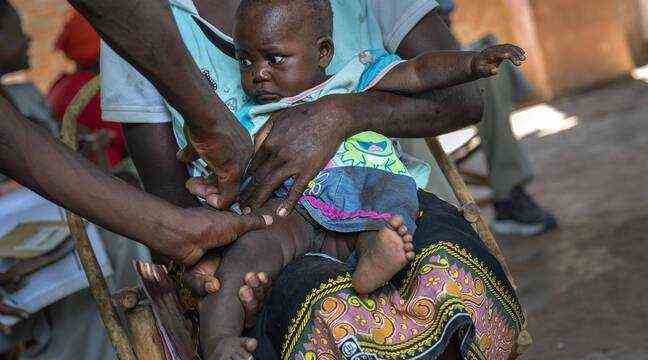“This is a historic moment,” WHO Director-General Dr Tedros Adhanom Ghebreyesus said as the World Health Organization on Wednesday recommended the massive deployment of the first malaria vaccine in children living in Africa sub-Saharan and in areas at risk.
“The use of this vaccine, in addition to existing tools to prevent malaria, could save tens of thousands of young lives each year,” he added, adding that it was a “breakthrough for science, child health and the fight against malaria ”. According to the WHO, a child dies every two minutes in the world from this very old disease, reported since Antiquity and which manifests itself by fever, headaches and muscle pain then by cycles of chills, fever and sweating.
260,000 children under 5 die each year
“RTS, S” is a vaccine that works against a mosquito-borne parasite (Plasmodium falciparum), the world’s deadliest parasite and the most prevalent in Africa. For Africa, where malaria kills more than 260,000 children under the age of 5 each year, this vaccine is synonymous with hope, especially as fears of malaria resistance to treatment are increasing.
“For centuries, malaria has haunted sub-Saharan Africa, causing immense personal suffering,” said Dr Matshidiso Moeti, WHO Regional Director for Africa. In total, five species of parasites of the genus Plasmodium, all transmitted by mosquito bites, are responsible for this disease. Plasmodium falciparum is the most pathogenic species and responsible for fatal cases. “We have long hoped for an effective malaria vaccine and now, for the first time, we have a vaccine recommended for widespread use,” he added.
The “RTS, S”, the only effective vaccine
Since 2019, three countries in sub-Saharan Africa, Ghana, Kenya and Malawi, have started to introduce the vaccine in selected areas where transmission of malaria is moderate to severe. Two years after the start of this first life-size test in the world, 2.3 million doses of vaccine could be administered.
Manufactured by British pharmaceutical giant GSK, “RTS, S” is the first vaccine, and the only one so far, to have shown efficacy in significantly reducing the number of cases of malaria, including severe and life-threatening malaria. , in children.
Severe forms reduced by 30%
The results of the vaccine pilot showed that it “significantly reduces malaria in its severe form by 30%,” said Kate O’Brien, director of the immunization department at WHO. In May 2018, the national regulatory authorities of Ghana, Kenya and Malawi authorized its use in the pilot areas. According to the WHO, phase 3 clinical trials have shown that the vaccine, when given in four doses, prevents 4 in 10 cases of malaria, and 3 in 10 cases of severe, life-threatening malaria.
But before a massive deployment, the next major step will be funding. The Vaccine Alliance announced that it would discuss, with other relevant actors, “whether and how to fund a new malaria vaccination program in sub-Saharan African countries,” in a statement released after the announcement of WHO.
Other vaccines in the coming years?
The year 2021 was marked by several important advances in the fight against malaria, a disease that has been neglected for years by pharmaceutical companies and research. A candidate vaccine developed by the University of Oxford, Matrix-M, had raised hopes in April, showing a hitherto unmatched efficacy of 77% in phase II trials. It could be approved within two years.
In July, the German laboratory BioNTech indicated that it wanted to apply the promising messenger RNA technology, used for its pioneering vaccine against Covid-19 with Pfizer, to malaria by launching trials for a vaccine next year. WHO also hopes that this latest recommendation will encourage scientists to develop other vaccines against malaria.
RTS, S is “a very important first generation vaccine,” said Pedro Alonso, director of the WHO malaria control program, “but we hope (…) it will encourage researchers to look for other types of vaccines to supplement or exceed this one. “

